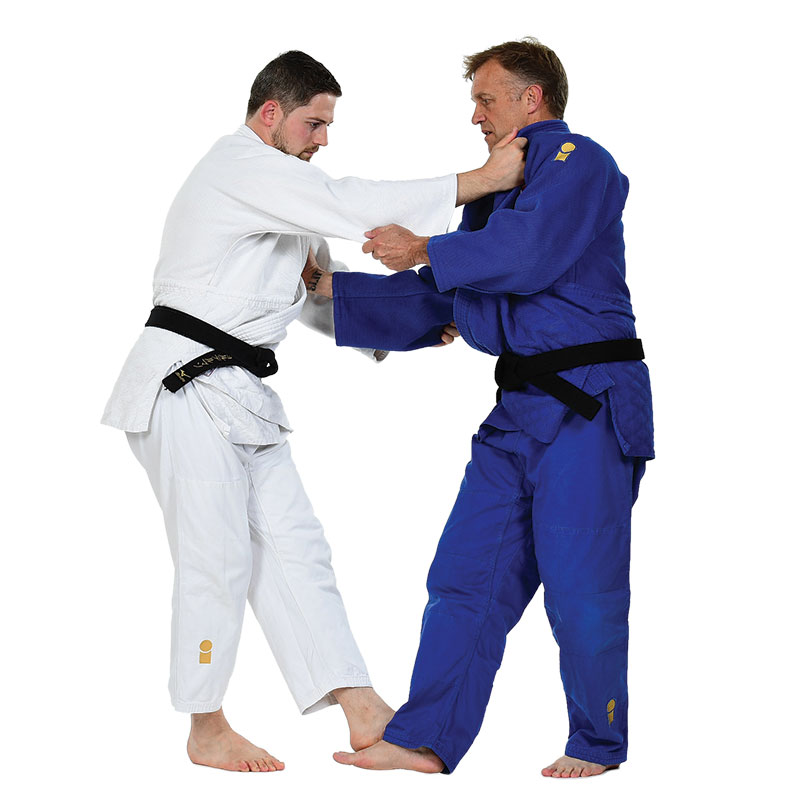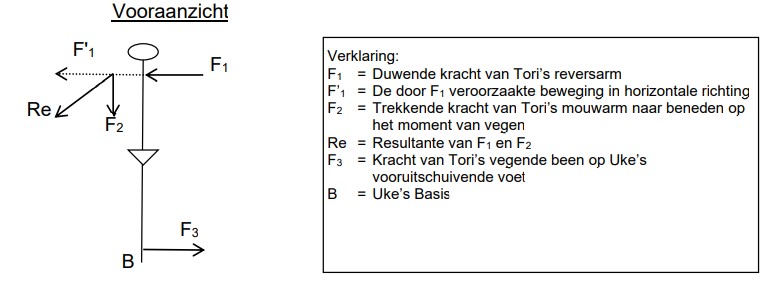De-ashi-harai 出足払
Advanced Foot Sweep
Classification: Ashi-waza (Foot Technique)
Japanese meaning:
-
De = advancing or stepping forward
-
Ashi = foot
-
Harai = sweep
Technical Description
A fundamental and elegant foot sweep. As uke takes a step forward or backward, there is a fleeting moment when the stepping foot is light and unweighted, just before the weight shifts onto it. This is the moment tori must anticipate.
De-ashi-harai is executed by using the sole or instep of tori’s foot to sweep uke’s stepping foot either from behind, the side, or even the front—depending on the movement direction. Simultaneously, tori uses the grip to pull or rotate uke’s upper body into the sweep, resulting in a clean, off-balanced throw.
Timing is everything. The sweep must occur just before the foot is planted and fully weighted—a split second too late, and the throw will fail.

Biomechanics of De-ashi-harai
This technique operates through a couple (torque) of opposing forces:
-
F3 (sweep force): Tori’s foot removes the base of support by sweeping uke’s foot sideways.
-
Re (reaction force): Tori’s hands pull or rotate uke’s upper body in the opposite direction of the sweep.
-
The result is that uke’s center of mass is forced into rotation with no supporting leg, leading to a rapid and controlled fall.
The effectiveness depends entirely on precision of timing, direction of pull, and the angle of the sweep.

Did You Know?
There are three primary types of leg techniques (ashi-waza) in judo, and they are distinguished by how the opponent’s leg is manipulated:
-
Sweeping techniques (Harai-waza):
-
Example: De-ashi-harai, Okuri-ashi-harai
-
These target a foot in motion and sweep it before it becomes weighted.
-
-
Reaping and hooking techniques (Gari- and Gake-waza):
-
Example: O-soto-gari, Ko-uchi-gari
-
These involve cutting or hooking into a weighted leg.
-
-
Blocking techniques (Ashi-barai or Guruma-type):
-
Example: Hiza-guruma, Sasae-tsurikomi-ashi
-
These use the leg to block uke’s movement while rotating or pulling the upper body.
-
De-ashi-harai is a masterful example of using minimal effort for maximum effect, and is often seen in both kata and high-level shiai (competition) for its clean, flowing execution.